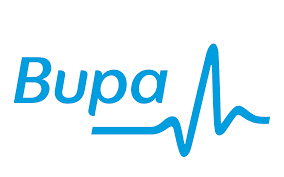
Although we’ve not had a white Christmas in Leeds this year, the skiing and snowboarding season is well underway. If you are like the majority of people going on a winter sport holiday, you will probably be unaccustomed to the demands that it place on your body. Not only will this affect your technique, balance, and endurance, it can often lead to serious injury. Here are some top tips on how to stay safe and healthy during your winter holiday.
1. Gradually build up your fitness
If you go straight from half an hour on the cross-trainer once a week, to four straight days of skiing, it’s going to hurt. For the best results you should start preparing 6 weeks before your holiday.
To feel at your best, do regular cardio workouts (3-5 times a week) at varying intensities. A general focus on muscle endurance, power, quadricep (thigh) strength, lower back and core strength will improve your skiing experience. To build strength and endurance in your core and lower body try a workout plan that include squats, lunges, box jumps, skaters, mountain climbers and planks.
Knowing your body well, and understanding how to re-condition it, is the best way to really master your skiing technique and look and feel like a pro. If you are planning a ski holiday over this season, why not book a one-to-one personal training session to establish your exact needs and build a bespoke exercise programme around it?
2. Get a full body check
A session with your osteopath or physiotherapist will check your joint movement, flexibility, muscle control and balance.
3. The all-important warm up
Because your muscles start cold, they are more prone to strain when you ski or snowboard. To help prevent injury try the following:
• A walk or jog for 10 minutes will improve circulation and make your muscles more elastic.
• Loosen up your legs by resting your heel on a low support so your leg is about 45 degrees to your body. Bend forward at the hips until you feel a tension in the hamstring.
• To loosen up the lower back muscles, stand with your feet shoulder-width apart and rotate your hip in a flowing, firm clockwise motion. Do this five times then repeat anticlockwise.
• Stand with both feet facing forward – one about 50cm in front of the other, the front leg bent and the back one straight. Lean forward so your weight is on your front leg. Press the heel of your back foot towards the ground, ensuring your toes point forward.
4. Don’t skip breakfast!
Don’t leave the hotel or chalet without fueling up for a physically challenging day. Protein and complex carbs are a must on the slopes. Why not try a veggie omelet with a side of fruit, or oatmeal with fruit and nuts.
5. Wear sunscreen
Not only will you be outside all day, but a higher altitude puts you at an increased risk of UV damage – the closer you are to the sun, the stronger the rays. Plus, snow reflects those rays right back at your face, which is like getting hit twice. And don’t forget to reapply!
6. Pack some healthy snacks
You’re going to get hungry while on the slopes, and you’re probably not going to want to miss great skiing to stand in line for overpriced snacks. So try to keep some energy bars in your pocket. Be sure to look for high protein ones with less than 12 grams of sugar. Get an extra boost of protein and calcium from single-serving cheeses, a pack of almonds, an apple or a banana.
7. Choose a healthier lunch
You are hungry, tired and cold, and nothing sounds better than a tasty burger and fries with a healthy dollop of ketchup. But think about how you feel after a heavy, greasy meal—not exactly raring to get back out there, right? Instead, choose hearty soup like lentil, black bean, or chicken noodle, a thin crust veggie pizza, turkey or chicken burger or even a baked potato topped with chili.
8. Always wear a helmet
It will keep your head warmer than a hat does, it won’t get soggy with snow, and if you take a bad fall, it drastically reduces your chance of severe injury. You may not think you look as cool but you will definitely be safer.
9. Check your equipment
Check that your equipment is well fitted and not faulty or worn as this can lead to problems and injury.
10. Take some lessons
Technique instruction will help you establish or re-establish the right habits.
11. Know when to quit
Listen to your body, and when you start to feel tired, take a break. When you’re fighting fatigue, you lose your form, technique and rhythm, and this is when unnecessary falls and injuries can happen.
12. Cool down
Light walking combined with gentle flexibility exercises will reduce soreness and prepare you for the next day’s activity.
13. Relax, massage stretch and roll
At the end of each day, stretch out your quads, hips, and hamstrings. A foam roller will help keep your muscles flexible and ready for the next day.
Deep tissue massage directed at the tight and stiff muscles will loosen them up and help your body recover after a long day on the slopes! The steam room, sauna or just a nice soak in a bath with some Epsom salts will also help to speed up muscle recovery.
14. Have a healthier happy hour
Planning ahead for those hours between your last run and dinner? Have crudité, salsa, hummus, and guacamole around for snacking, and don’t feel bad about indulging in a little après ski cocktail—after all, you’re on holiday! Just keep it to one or two drinks so you don’t feel sluggish the next day. Try to stick to wine, vodka with club soda and a splash of fruit juice, or beer. And don’t forget water, especially before bed!





